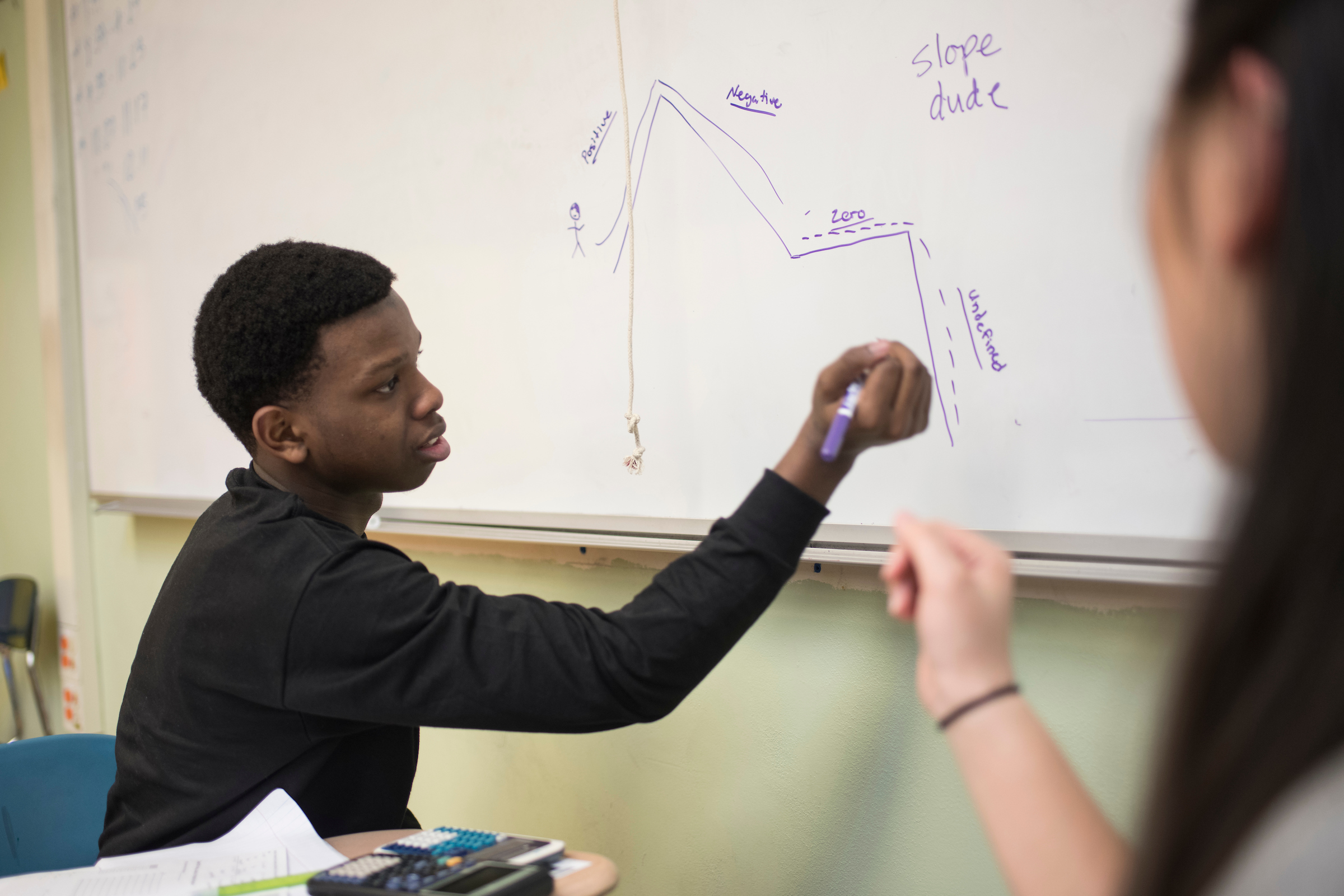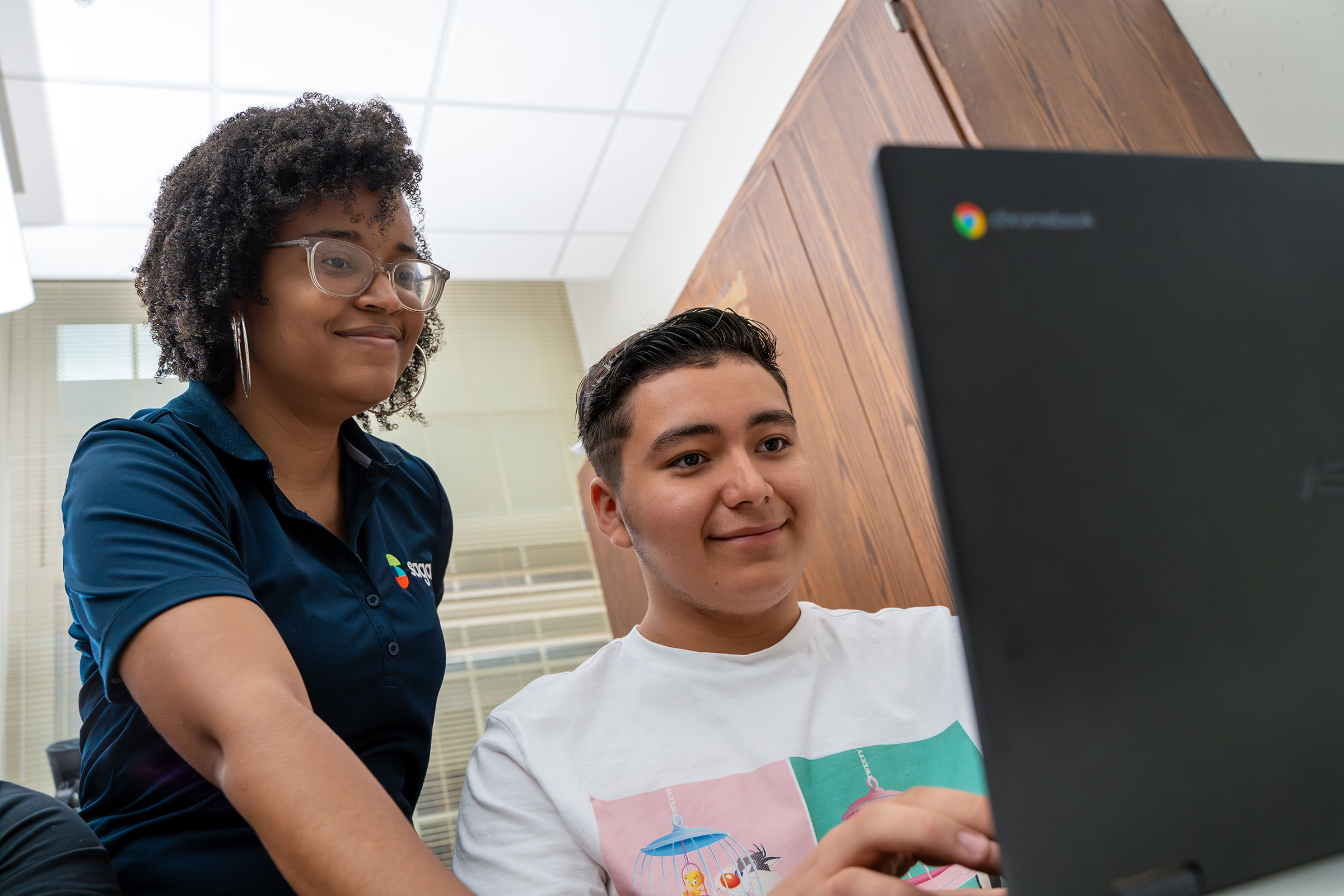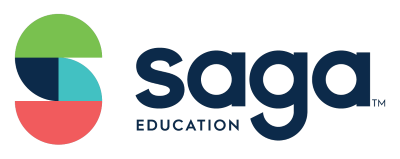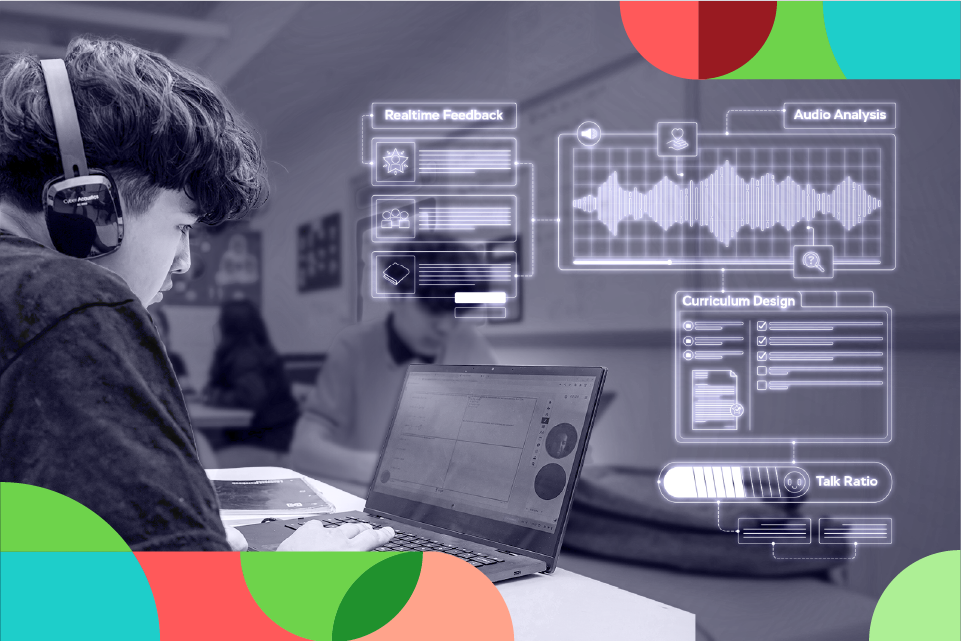Key Takeaways:
- Algebra I is a crucial indicator of high school graduation rates. Students failing this course have a significantly lower chance of graduating.
- High-impact tutoring can improve graduation rates by providing targeted interventions and personalized instruction to students.
- Students of color, students experiencing poverty, and those with learning disabilities are most at risk of benefiting from high-impact tutoring.
- High-impact tutoring can address achievement gaps and improve overall student outcomes.
Jump to section:
- The Relationship Between Math and Graduation Rates
- Identifying Students in Need of High-Impact Tutoring Students
- How High-impact Tutoring Contributes to Long-term Success Beyond High School
- Improve Graduation Rates by Closing the Achievement Gap with High-impact Tutoring

High school graduation rates tell a story about the state of education and accessibility to quality education in safe and supportive learning environments. While efforts to increase graduation rates have proven successful overall, many disparities exist between students from different backgrounds and demographics.
It isn’t necessarily possible to help all students reach graduation using the same interventions, as the reasons behind high dropout rates and expulsions can vary. However, research has shown strong relationships between specific benchmarks for learning and the probability of graduating high school. These indicators demonstrate that we can implement targeted interventions at critical learning points to improve student outcomes.
This blog will explore how implementing high-impact tutoring can increase student achievement by closing opportunity gaps, addressing learning loss, and accelerating learning. In doing so, high-impact tutoring can significantly impact graduation rates and long-term success for students from all backgrounds.
The Relationship Between Math and Graduation Rates
Studies have found that students who do not pass 9th-grade Algebra I have a significantly lower high school completion rate. Saga has identified Algebra I as one of the most crucial indicators for future academic success. Failure in only one full-year course in 9th grade decreases graduation odds by 30%. However, if that failed course is Algebra I, only 13% of those students will likely graduate in four years.
Students must pass Algebra I to graduate high school. Still, it is important to comprehend and retain course information, not just make it through. Algebra I teaches skills and theory that carry over into other math and science classes. If students cannot build on what they have already learned or have a shaky understanding of the material, their opportunities for college and specific careers are significantly impacted. Students must receive interventions in 9th grade to have opportunities and choices through high school, college, and beyond.
Identifying Students in Need of High-Impact Tutoring Students
High-need demographic groups can show us where to focus efforts and expand access to quality instruction, aggressive intervention, and resources to close opportunity gaps. Students of color are more likely to drop out of high school than white students. The reasons behind this fact are numerous and complex, including the likelihood of lower socioeconomic status and living in historically underserved communities. Other factors can include experiencing the presence of disabilities, previous learning loss, learning loss due to COVID-19, unsafe school environments, hazardous or insecure travel to and from school, ESL or families whose language or education barriers may prevent them from assisting with schoolwork, housing insecurity, and the effects of systemic racism.
In addition, in many communities where students of color are the predominant demographic, teachers and staff may still be primarily white. Students may not have access to culturally relevant education or teachers and school role models in which they can see themselves. It is important that students are represented in staffing and administration and that they receive education and lessons that reflect the world and cultures they live in.
The work to address inequities and overcome opportunity gaps is our responsibility. Interventions are proven effective for high-need students when all students are given access and are not singled out or required to use out-of-school time and resources to improve.
Interventions like high-impact tutoring have proven to increase learning outcomes by providing students with remediation and accelerated learning as part of regular classroom time. High-impact tutoring also increases social and educational support for students by providing tutors to work with small groups of students in math for the entire academic year. This can bolster the effectiveness of regular class instruction, provide differentiated learning opportunities, and help students build good habits, confidence, and skills. The lessons are culturally relevant and tailored to their current needs and goals.
How High-impact Tutoring Contributes to Long-term Success Beyond High School
High-impact tutoring optimizes learning for students by providing educational experiences that can be difficult for public schools to guarantee due to large class sizes and low funding. Experiences like one-to-one attention, personalized instruction, and targeted support are made even more effective through ongoing assessment by a trained tutor.
High-impact tutoring can show students how to unlock their potential and provide them with the necessary skills to succeed in high school and beyond. If a student is disengaged or has low confidence, having opportunities to take risks, learn in safe spaces, and receive information that makes sense to them can inspire confidence and increase engagement.
Investing in high-impact tutoring programs is a means to improve graduation rates and empower students for future success.
Improve Graduation Rates by Closing the Achievement Gap with High-impact Tutoring
High-impact tutoring also addresses graduation rates by offering differentiated instruction and giving students an additional source of support. Students of color, students experiencing poverty, and those with learning disabilities are most at risk for dropping out of high school. When teachers and schools see indicators of academic trouble, like chronic absenteeism, disengagement, and low test scores, they can implement interventions and approach remediation.
However, if high-impact tutoring is already in place, students can receive the attention and personalized instruction they need without having to seek it out or wait for an educator to flag issues and start remediation. High-impact tutoring is embedded into regular classroom time, supporting learning for all students and improving outcomes across the board.
We must address contributors to high school dropout rates so that all students can choose the next steps in their education and careers. Students from all backgrounds deserve bright, prosperous futures that benefit themselves, their families, and their communities.
Support and advocate for initiatives that provide high-quality tutoring programs in your school districts to close the achievement gap and ensure success and well-being of all students.
Discover how Saga Education Solutions can close the learning gap at your school or district.
Saga Consult



